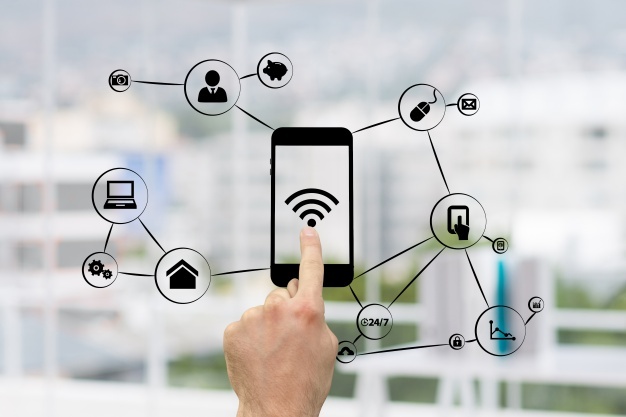
Finally, the entire global population can have access to 5G. Let’s discuss something beyond it; the 6G technology (sixth-generation of wireless technology infrastructure), which is under development and countries such as China, Japan, Singapore, United States, South Korea, and the European Union; who want to become the international power are investing in 6G.
There are so many questions roaming around the web; what is 6G? When will it come in the market? Why do we need 6G? What will be the changes one can encounter with 6G? And what is the future scope of 6G technology? Since we know our readers’ demands, we put them into words. Therefore, we are here with the answers to your questions. Scroll till the end to stay informed about the 6G technology updates.
What Is 6G Technology?
6G, the sixth generation of wireless technology, is one step ahead of 5G in the internet race. It is going to be a wireless communication technology that will transmit the signals from the International Telecommunication Union (ITU) at a higher speed of about 1TB per second with the lowest latency till now. This technology’s goal is to offer one microsecond-latency communication to the users.
With the new technology, improvements occur. So as with 6G, one can expect upgraded imaging, presence technology and location navigation. Moreover, an appropriate location for data storage, processing and transfer will be decided by the intervention of AI in 6G computational infrastructures.

At Present, Is 6G Technology Available Anywhere In The world?
On November 6 2020, China launched an experimental satellite with candidates for 6G technology into orbit, along with other 12 satellites using a long march 6 Launch vehicle rocket to check the presence of terahertz communication technology in space, as per BBC News.
Point to be noted here; it is an experiment neither China nor any other country have the access to 6G technology yet. Presently, 6G technology is in theory only. It does not have a physical presence.
When Will 6G Come Into The Market?
While 5G is still expanding its footprints to be accessed by the global population, 6G network technology is at its nascent stage, and will take almost a decade to come into the market. However, we can expect its commercial placement by 2028 but, its worldwide access must not be anticipated before 2030.
Features Of 6G Technology | Will 6G Technology Be Useful?
6G does not only mean faster speed; it has a lot on its plate to offer. 6G is expected to offer data latency of less than 1 Millisecond which means the systems will be working completely out of the cloud. It will be beneficial for small devices such as smartphones, smartwatches and VR glasses. For example, one can expect real-time data processing on their VR glasses themselves.
Let’s see things in their broader sense.

Faster Data Supply, Lower Latency
When 5G came, it was expected to deliver up to 100mbps. In reality, it does not supply more than 39GHz. So the researchers are expecting to have a faster supply (up to 1TB per second) with 6G. By saying this, one could expect to download 142 hours of video in one second. Does it sound realistic? With 6G, it could be feasible. Simply put, higher frequency, more troughs in the wave means enhanced data processing and supply.
Reliable And Accurate Network
At present, 5G has the highest speed of 500km/h for mobile devices, which is expected to be 10 devices/square km. If that happens in real life, a larger number of devices will interact in real-time. Moreover, 6G will develop the M2M (machine-to-machine) interaction with improved network reliability and reduced error rate.
Focused On Energy-Efficiency
Though the network will be wireless, the supporting devices will need battery life. 6G is aimed to provide two times improved battery life that will contribute to sustainable growth. As the world is becoming environment friendly, 6G technology is designed to boost the energy efficiency of the telecom network by two times than 5G.
Emphasis On Machines
Since 5G has the focus on improved experience for human users, 6G has prioritised machine usage. Fast data processing with lower latency will improve the functionality of connected devices and machines, such as drones, autonomous vehicles, smart displays, and any other device with smart sensors. Also, users will be able to use next-gen mobiles devices – holograms, VR headsets, AR glasses, etc.

6G And Future Of Wireless Devices
6G is projected to accelerate the practical application of Artificial intelligence (AI). It will help improve the operational efficiency like locating the best place for base stations, less energy consumption by networks, and managing complicated networks mechanically.
Conclusion
While concluding, it is safe to say that 5G is working well for people and corporations presently. On the contrary, 6G is the future requirement, and will be beneficial to not only the professionals yet the entire world. It may take almost a decade to experience the presence of 6G technology in our daily lives, but the wait is going to be worth it. For more updates on 6G technology, keep following our website and do not forget to subscribe to our newsletter.
